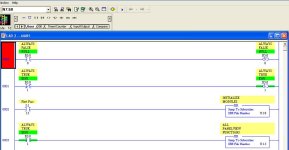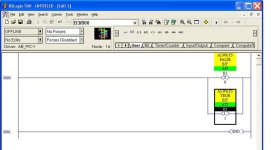Some folks like to have bits they can use to disable a rung for testing commissioning, or even for maintenance. Also, the PLC-5 has an instruction called AFI just for such purposes.
And, there are a shedload of SLC programmers who started out with the PLC-5.
So that's a "roll yer own" AFI (Always False Instruction) along with the always true.
Shorted branchlegs generate warnings, but XIC "Always_True" keeps the warnings away. I believe there may have been PLCs that forbid shorted branch legs. In any case, the always true bit can be used for testing.
Highlight the address and hit CTRL+F, <enter> followed by F3 (repeat F3 to jump to all the places it is used).
I don't use these bits much, but I do keep bits reserved for things such as "Test Latest Program Changes" and I might use that bit to swap in a new subroutine or multiple sections of code and tie it to a protected screen on the HMI. Then I can go home and know that if something goes haywire, the maintenance tech on shift can go to the HMI and "Untest" my logic for me.
I think all my PLCs presently in use except for a SLC 150 support shorted branchlegs, so I will use those and be able to quickly find them later. I prefer not to leave forces in a processor, and definitely avoid leaving edits testing overnight.
To disable a rung, I will add a series bit examine instruction of the opposite state of one already there, and add a rung comment...no special bits required, and it can't change states mid scan and foul up my intentions. I prefix my rung comments with YYYY-MM-DD: PEC: my initials. Then I can find those rungs very quickly by searching for the initials or the year/month.






